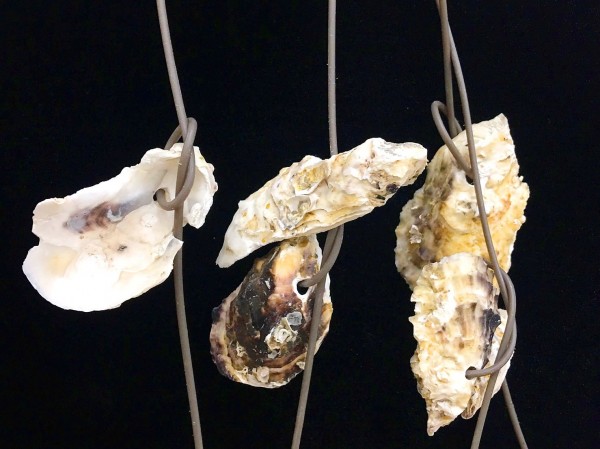《TAIPEI TIMES 焦點》 ‘Portuguese oyster’ came from Taiwan: researchers
HITCHING A RIDE: The team said that the oysters attached themselves to the hulls of Portuguese ships docked in Taiwan, which carried them back to Europe
By Wu Hsin-tien and William Hetherington / Staff reporter, with staff writer
A research team has discovered that a species of oyster long referred to as the “Portuguese oyster” is in fact native to Taiwan, and found that the local population has proven more robust genetically than its European counterpart.
Research conducted by the Council of Agriculture’s Fisheries Research Institute, National Taiwan Ocean University and Academia Sinica over the past four years has uncovered evidence that the Taiwanese oyster — originally thought to be a variant of the Japanese Pacific oyster — is actually the ancestor of the Portuguese oyster.
A report published in the Sept. 26 edition of Scientific Reports said Taiwanese oysters attached to the hulls of Portuguese ships docked in Taiwan in the 16th century and were carried to Europe.
Hsiao Sheng-tai (蕭聖代), a research assistant at the institute, said Japanese and Portuguese oysters are indistinguishable when they are young, adding that their differences can only be observed after cultivating them side by side for five years.
At maturity, the Pacific variety can grow up to 40cm in length, whereas Portuguese oysters grow to only 10cm, Hsiao said.
The Pacific oyster is found in the waters around Japan, the Korean Peninsula and northeast China, Hsiao said, adding that it is the most common artificially cultivated species worldwide.
Due to Taiwan’s proximity to Japan, researchers believe that the Taiwanese variant was at one point also part of the Pacific species, he said.
Despite this belief, doubts remained because of local fisheries experts inability to grow large oysters or breed local oysters with those imported from Japan, Hsiao said.
“We collected 313 oyster samples from the coast of Taiwan and the seas south of China, looked at the DNA and discovered that both wild and cultivated breeds from Taiwan were Portuguese oysters,” Hsiao said.
The closer to the coast oysters were caught, the closer their DNA matched that of Portuguese oysters, providing researchers the clue that led to discovering the link, Hsiao said.
A plague in 1960 nearly wiped out the Portuguese oyster in Europe, Hsiao said, adding that Japanese oysters were imported to deal with the loss, resulting in the Japanese variety being more abundant than the Portuguese variant in Europe.
“A few years ago, an infectious disease nearly wiped out the Taiwanese oyster as well, but from its survival we can infer that the local variety is more resilient, indicated the local population might be the parent species,” Hsiao said, adding that it probably gained its name after its discovery by 19th-century Portuguese researchers after being transported in the 16th century by ships sailing between Portugal and Taiwan.
The scientific name of the Pacific oyster is Crassostrea gigas, which means “large oyster,” while the Portuguese oyster is Crassostrea angulata, meaning “small oyster.”
“While ‘Portuguese oyster’ is just a colloquial name, getting people to start calling it the ‘Taiwanese oyster’ would not be easy,” Hsiao said.
新聞來源:TAIPEI TIMES















